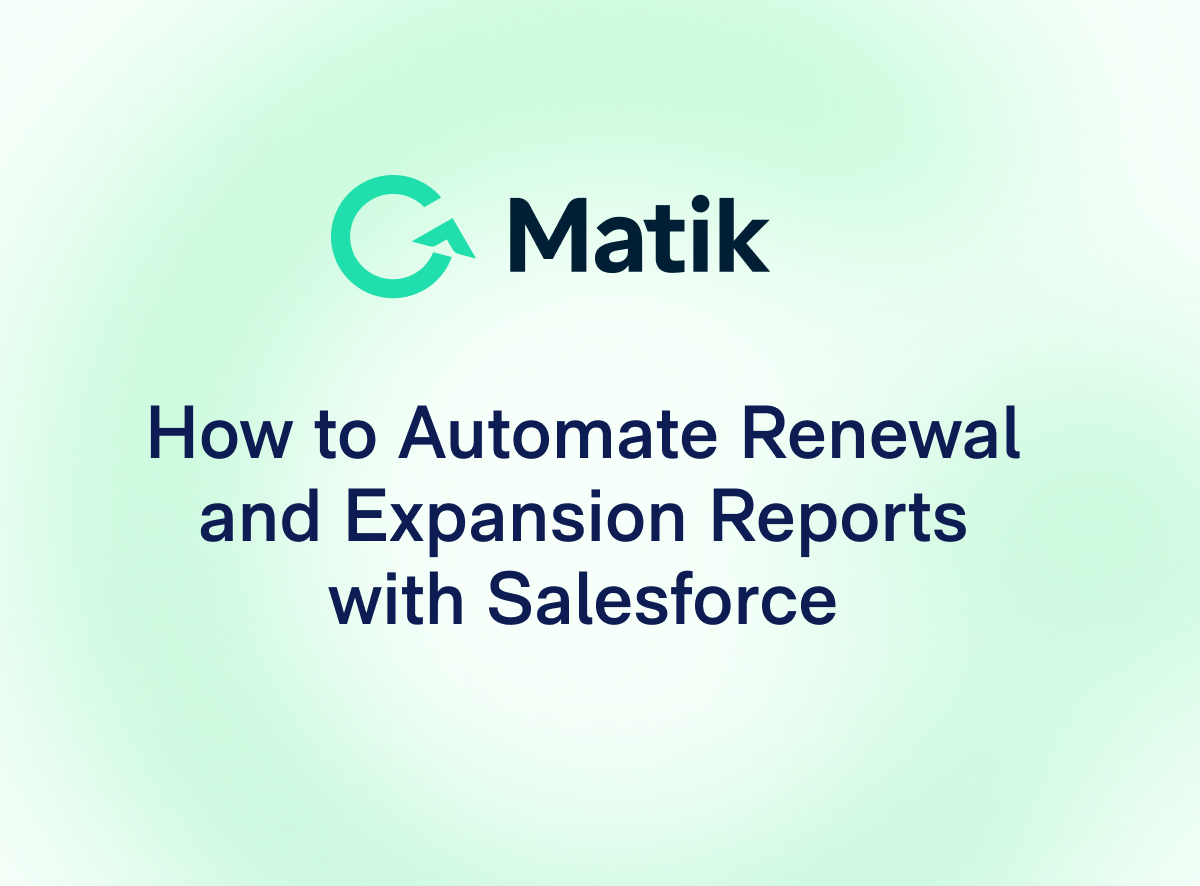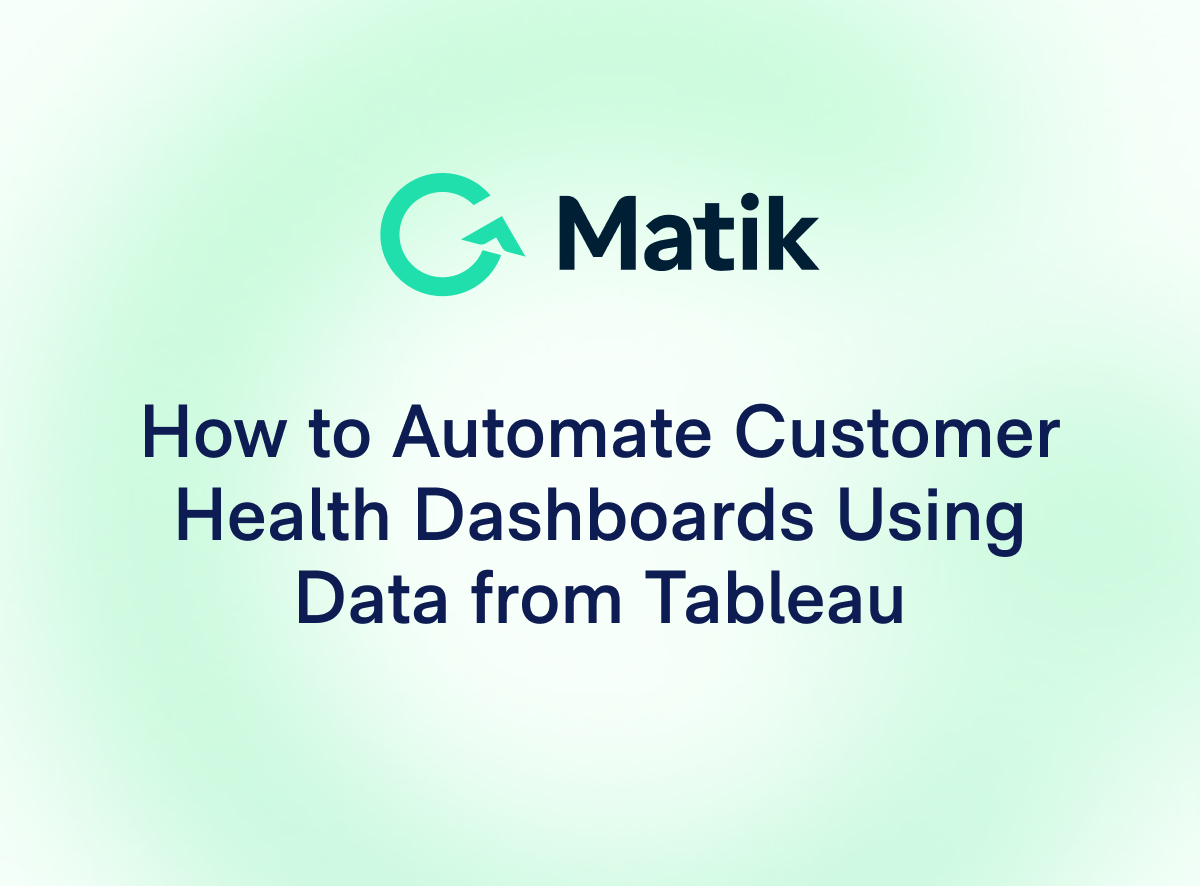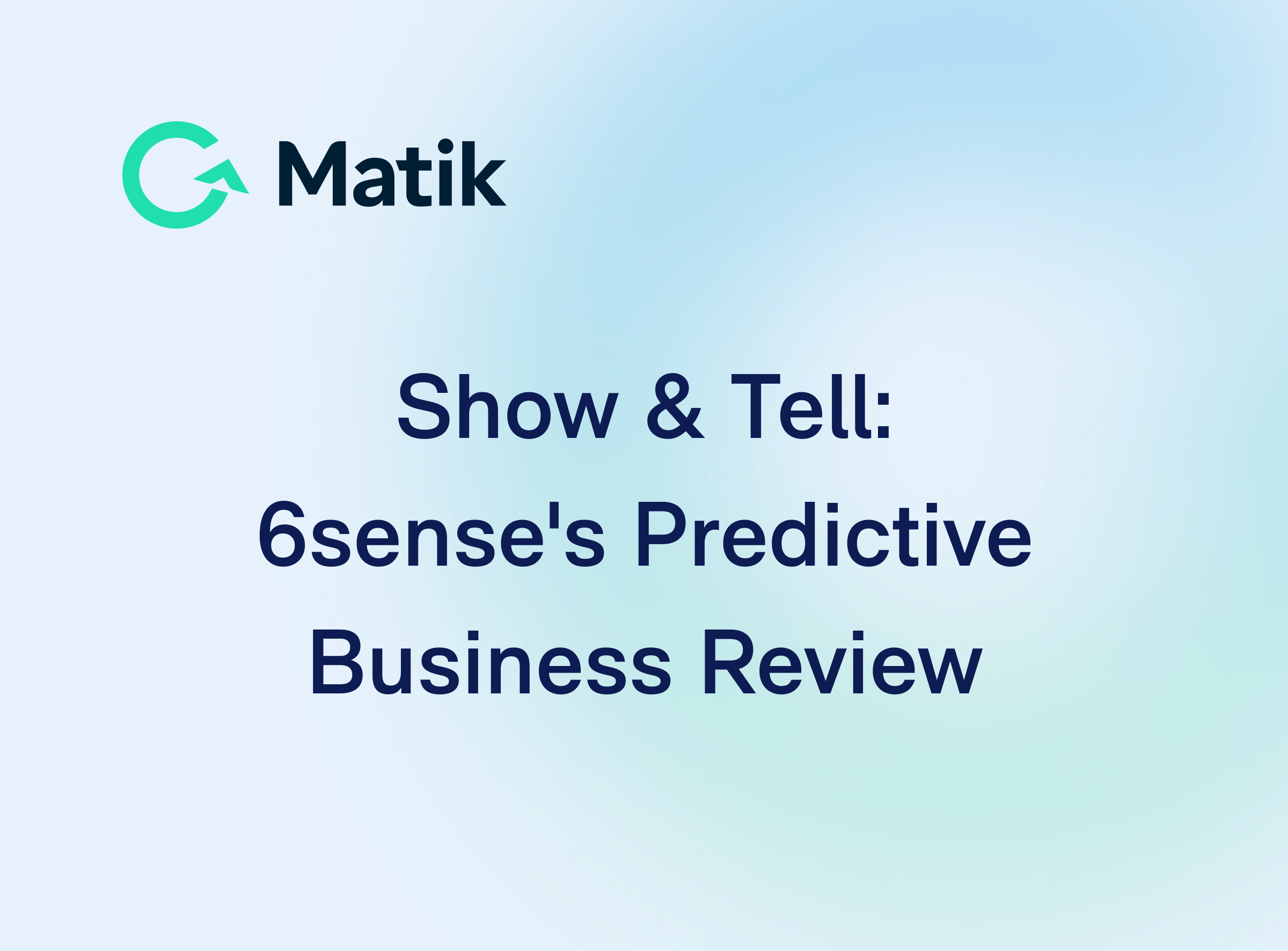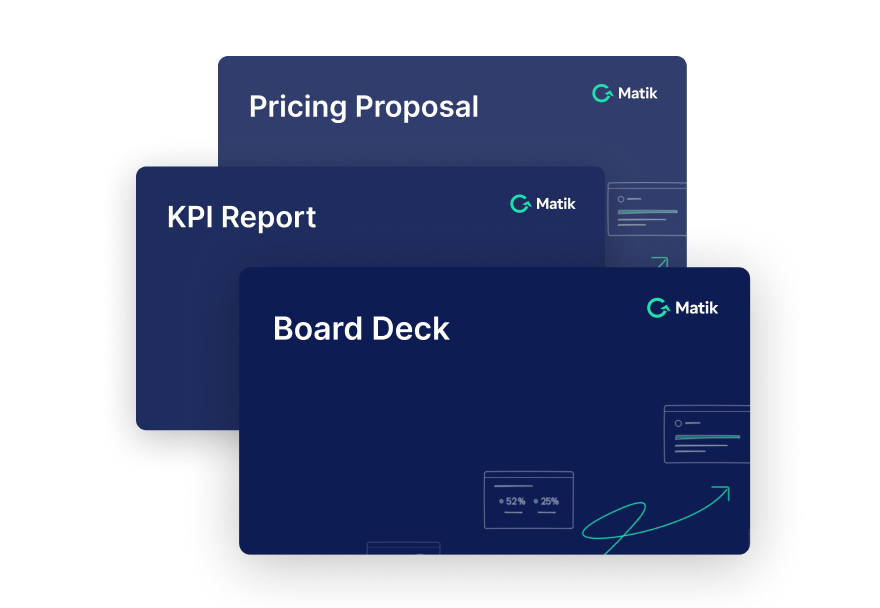Join Our Newsletter
Salesforce’s CRM platform is full of data points that provide valuable insights on each individual customer. Salesforce users have insight into an account’s basic information such as goals and objectives, as well as more in-depth information on account activity, all touchpoints, and overall account history. This data is valuable for sales, marketing, and customer service teams that need a holistic view of each customer. However, with so much customer data in Salesforce, it can be a challenge to pick and choose the data that matters most when translating all of that information into a compelling story that proves product value.
When your team is putting together a customer-facing presentation such as a business review, it’s important to simplify all of the most crucial data into a clear narrative that is easy to understand. These touchpoints are your team’s opportunity to show how your product is helping customers move toward their goals and objectives, and this information needs to be concise, compelling, and digestible. Read on to learn how to turn your complex Salesforce data, dashboards, and obscure insights into well-developed narratives that can improve customer retention.
Crafting the story
To remain competitive and retain customers year after year, your customer success team needs to be able to prove how your product is helping customers achieve their specific goals. Sporadically spitting out numbers and screen-sharing Salesforce dashboards won’t cut it—your customers need to receive a white-glove, customized presentation that clearly spells out a success story, or at least proves progress in the right direction.
With this in mind, you need to craft a narrative that strategically delivers specific insights at different stages of the customer journey. For example, the most valuable data in the onboarding stage may not hold as much weight during the retention stage. By using Salesforce data to craft stories that build upon each other, your customers can see a holistic picture of the value of your product.
Onboarding stage
During the onboarding stage, it’s important to reinforce the customer’s key goals, objectives, and current status. Salesforce houses plenty of valuable account data that CSMs can use to build trust and lay groundwork during the onboarding phase of the customer lifecycle. By focusing on these foundational details early on, you can show your customer you understand their goals and establish a plan for success. Then, in the following customer lifecycle stages, you can revisit this information and build upon it with supplemental data.
To tell better stories with Salesforce data, consider creating templated slides that revisit this type of account data at the start of every customer-facing presentation. This will help your touchpoints remain consistent, keep everyone on the same page should goals change, and will also keep your CSMs from having to reinvent the wheel each time they create a new presentation.
Adoption stage
During the adoption phase of the customer lifecycle, it’s important to show customers insight into product usage so you can provide any recommendations. When you’re putting together a touchpoint with a customer during the adoption stage, use Salesforce to pull information that shows how much (or how little) each customer has been interacting with your team and your product.
Even if the data doesn’t show something positive during this stage, still share it. This opens up a conversation about how the customer can improve adoption and engagement overall, and gives you an opportunity to share tailored recommendations.
Renewal stage
During the renewal stage, it’s time to show your customers what they care most about, which is ROI data. While this data may not always be explicitly available in Salesforce, other data in Salesforce can help you make projections and estimates. Sharing this type of data for each customer during the renewal stage will help you build trust and prove the value of your product.
During an EBR or QBR presentation, bring in data from Salesforce to prove ROI as early and often as you can, and present it in a digestible, branded, and shareable way. Having this information handy will help your customers share the value of your product with key stakeholders within their companies, and will ultimately make them more likely to see your product as business-critical.
Expansion stage
Salesforce data can also be used for benchmarking, which is especially important for customers to see during the expansion phase. By using Salesforce data to clearly show how your customers are moving along toward goals in comparison with your highest performing customers in terms of usage and adoption, you can help your customers see room for growth. This will help your customers see you as a trusted advisor and set the stage for expansion.
To take this a step further, condense Salesforce benchmarking data into simplified, digestible slides that your customers can easily share with their teams. This will further build credibility and confirm the value of your product within their organization, which can potentially open new doors.
__________
We’re excited to share that Matik App for Salesforce is now available! Salesforce users can now create personalized, data-driven Google Slides and Microsoft PowerPoint presentations for prospects and customers in minutes, without ever leaving their Salesforce instance.
Salesforce is just one of the many data sources that Matik users can use to generate customer presentations. Users can also pull data from other sources like Gainsight, Hubspot, BI tools, and data warehouses to tell a comprehensive story. By using Matik to pull key data from these sources into custom-tailored presentations for customers, your team can more effectively communicate the value of your product while saving time and resources.
---
See Matik in Action—Request a Demo















